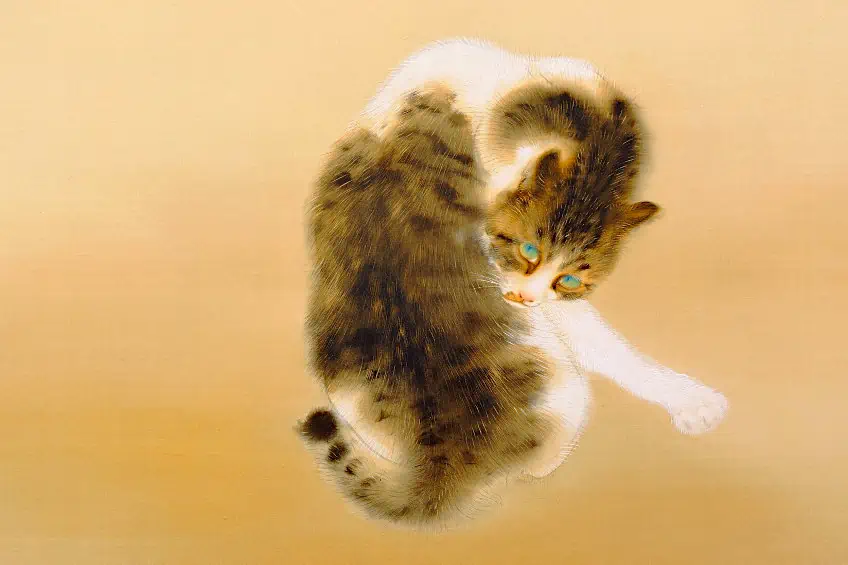1920s Art – A Decade of Major Developments in Early Modernism
The 1920s was a significant period of innovation and cultural influence defined by emerging art movements such as Art Deco, Precisionism, the Harlem Renaissance, and many other communities in the arts. Excess was at the forefront of art in the 1920s, which reflected the consumerist cultures of industrialized cities and towns. In this article, we will review all you need to know about 1920s art, including the influential moments in the world that shaped the art movements of the period and its notable artists. Keep on reading for more about the rich expanse of 1920s art!
Contents
An Introduction to 1920s Art: The Roaring Twenties
What was so significant about the 1920s, and what can we learn from its history? The 1920s was dubbed “the roaring twenties” and was noted in history as the decade of change. The 1920s saw the emergence of many socio-political movements across the globe, including the aftermath of World War I, a boom in the jazz industry, advancements in aviation, the rise of white supremacist groups such as the KKK, and the crash of the stock market.
The establishment of America as a world power in the 1920s was one of the most significant cultural and economic changes since it impacted global relations and the spread of American culture across the globe.
Also known as the années folles in French, the 1920s marked the dawn of cultural innovation in the arts as well as many scientific breakthroughs such as the discovery of penicillin, King Tutankhamun’s tomb, and the invention of the television system.
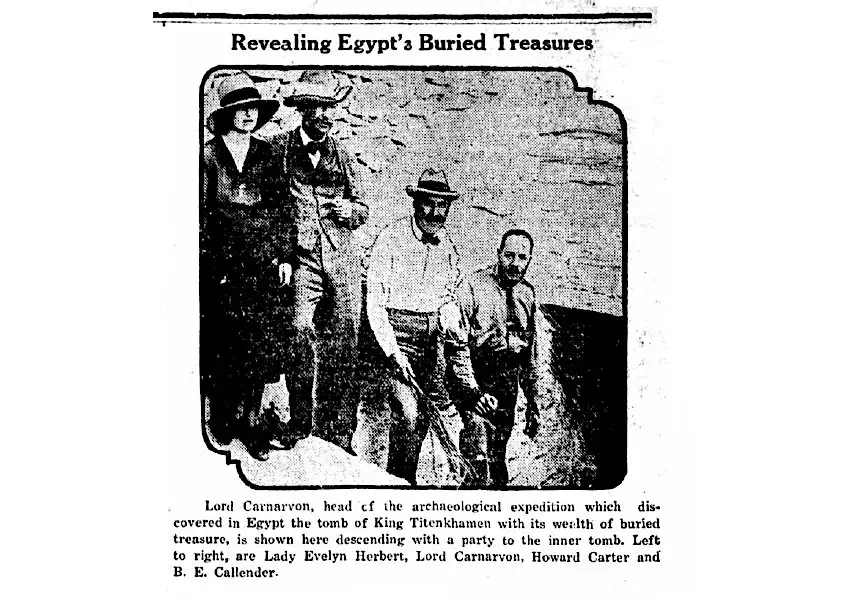
Art was, of course, a mirror of the time that reflected the air of change through movements such as Art Deco, Cubism, and Surrealism. The 1920s were crucial to the development of Modern art and critical thinking around form and representation in art. Art styles developed by pioneers such as Pablo Picasso and René Magritte grew in popularity and the art world had begun to cement early ideas of what it meant to create modern art.
Cities like Paris became the epicenter of art, attracting artists and collectors alike inspired by radical innovators like Edgar Degas, Henri Matisse, and Pablo Picasso, who had made the city their home.
In America, artists like Edward Hopper, Tamara de Lempicka, and Georges Lepape dominated the Modern art scene by setting new guidelines that broke the traditional conventions of art. The art market saw an increase in the American collector, which strengthened the dollar such that by the mid-1920s, collectors could pick up truckloads of Modiglianis. The global collecting stage opened up at the Paris’s Hôtel Drouot sale of John Quinn’s collection, which saw many local American collectors seize their opportunity to invest in significant emerging artists.

1920s Art Movements
American movements such as the 1920s Art Deco period flourished while Europe opted for a reflective view of the world through postwar Dadaism and Surrealism. Below, we will dive into the different art movements that shaped the art world and defined the age of the golden twenties.
Art Deco
The 1920s Art Deco movement emerged in America and reflected new art styles that responded to the ornate decorative style of the Victorian era. Throughout the 1920s and 1930s, the Art Deco movement infiltrated the fields of visual and applied arts and was influenced by multiple sources, including the 1925 Paris International Exhibition of Modern Decorative and Industrial Arts.
The visual characteristics of 1920s Art Deco art and design were defined by a focus on geometric form and sleek designs that reflected themes of luxury, sophistication, and modernity.
1920s Art Deco art was a fusion of art styles derived from Futurism, Bauhaus, and Cubism styles, as well as prehistoric civilizations such as Aztec and Egyptian art.
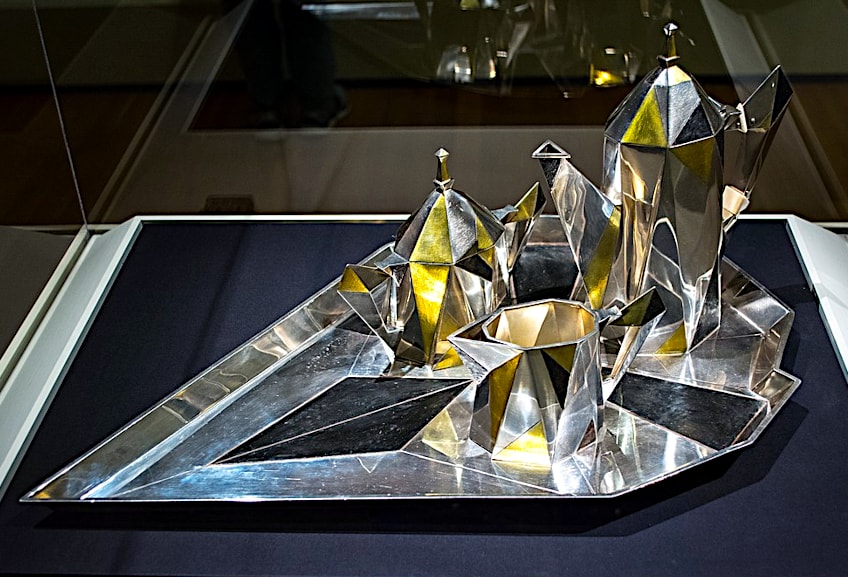
Art Deco also saw many artists incorporate new materials such as plastic, glass, and chrome to reflect a machine-like aesthetic, characteristic of the 1920s. Art Deco had its reach across the Americas and into Europe, which left a significant impact on the fields of industrial design, fashion, and architecture. Cities like Paris and London embraced Art Deco designs and included them in their plans for public buildings, train stations, and skyscrapers.
Other visual elements found in Art Deco art include the use of distinct geometric shapes and patterns such as zigzags, chevrons, sweeping lines, sunbursts, and stylized motifs.
Much of Art Deco art was inspired by the exoticism of cultures from around the world and the Far East, which inspired floral and animal motifs. With the emergence of the Great Depression at the end of the decade, Art Deco and its allure began to fade, however, its impact can still be seen in architecture and the decorative arts, which make it a timeless style. 1920s Artists who pioneered the Art Deco movement included figures like Sonia Delaunay, Tamara de Lempicka, Louis Icart, Jean Dunand, and Erté.
Surrealism
Surrealism emerged as an Avant-Garde art movement of the 1920s as a product of Dadaism and the ideas of psychoanalyst Sigmund Freud. The movement was based on the exploration of irrationality led by the human mind and the subconscious and sought to challenge the existing conventions of art at the time. Creatives such as André Breton were highly influential in the spread of Surrealism and the liberation of artists from academic discourses. Surrealism was founded in Paris, where many 1920s artists and poets convened to share their ideas and discuss critical points of interest among their peers.
André Breton’s Manifesto of Surrealism (1924) was established as a pivotal document, which defined the principles of the movement and emphasized the concepts of automatism and free association.
The movement undoubtedly had a profound impact on the 1920s art world with artists such as Joan Miró, Salvador Dalí, Max Ernst, and René Magritte, who developed distinct art styles and philosophies that shaped the widespread adoption of Modern art. Surrealist art styles manifested as bizarre explorations of the artist’s psyche and subconscious, which produced images that seemed illogical and provoked the public to explore deep emotion. The foundations of Surrealist art challenged viewers’ perceptions of art, form, and space, and essentially deconstructed reality as most people understood it.

Surrealism influenced artists, writers, and intellectuals across Europe and America who admired the spirit of the movement and were inspired to explore their personal psyches. Famous American Surrealists included Man Ray, Dorothea Tanning, and Joseph Cornell, all of whom introduced new techniques and principles to the movement. Surrealism was also seen in literature, fashion, and film, as disruptive and imaginative pathways to explore the inner workings of the mind and power of the unconscious.
Films such as Entr’acte (1924), The Seashell and the Clergyman (1928), and Un Chien Andalou (1929) were famous experimental cinematographic works inspired by Surrealism.
Cubism
A movement of the early 1900s, Cubism was one of the most influential art movements in art history that rejected the academic techniques of representational art. Led by 1920s artists such as Georges Braque and Pablo Picasso, the Cubist art movement was a targeted movement that sought to deconstruct reality through an analysis of the world informed by its basic geometric features. Cubism continued to grow in popularity throughout the 1920s and was focused on introducing multiple viewpoints and perspectives of the world at one given moment, which further disrupted the notions of space, form, and representation.
The movement was revolutionary and was defined by two separate developments, including Analytical Cubism and Synthetic Cubism.
Cubism’s impact on the art world was felt across Europe and America and inspired movements such as Constructivism, Orphism, and Futurism. American 1920s artists such as Marsden Hartley and Stuart Davis embraced the idea of geometric compositions, which led to the development of American Modernism. European artists like Fernand Léger and Juan Gris experimented with creating new stylistic innovations that deviated strongly from the original aims of Cubism.
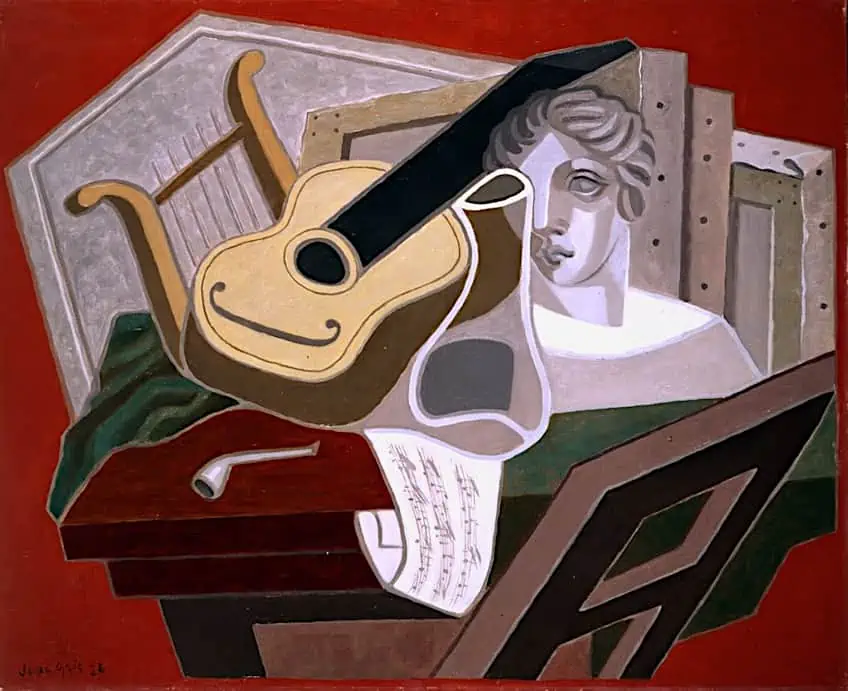
Popular 1920s paintings to emerge from the Cubist movement include Still Life with Guitar (1920) by Juan Gris, Composition with Large Red Plane, Yellow, Black, Gray, and Blue (1921) by Piet Mondrian, and Femme assise dans un fauteuil (Woman Sitting in an Armchair) (1927) by Fernand Léger.
Precisionism
Another movement related to the Cubist movement was Precisionism, which was also known as Cubist-Realism or Sharp-Focus Realism. Precisionism emerged in the United States during the 1920s and was inspired by the European Cubist styles that were shaped by precise and formal qualities. American Precisionism in the 1920s reflected the landscape of industrialization and urban environments, which were driven by advancements in technology.
The growth and appeal of modern city life saw many people move from rural areas into cities and embrace the culture of modernity expressed through towering architecture, geometric forms, and mechanical landscapes.
Precisionism was popular in New York City and was developed by painters and photographers such as Georgia O’Keeffe and Charles Sheeler, who leveraged the details of the machine era to provide a sense of clarity and precision in everyday aesthetics. Precisionists were captivated by the visual allure of city life and the relationships between nature and the built environment.
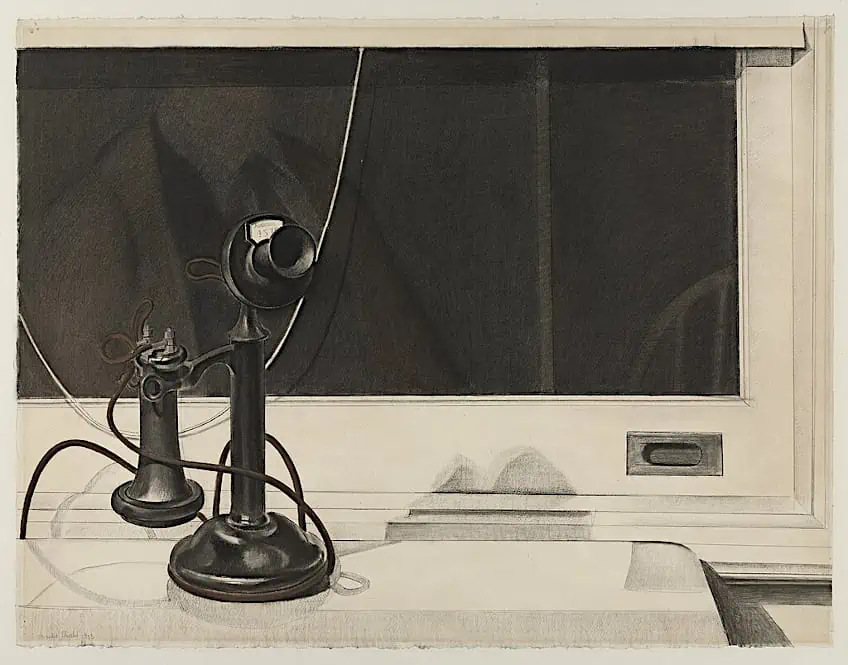
Artists were also able to explore abstract forms and compositions through geometric structures, factory buildings, and clean lines that defined Precisionism. The movement influenced the styles found in Art Deco and Neue Sachlichkeit (Germany) movements across the world and even extended to agricultural landscapes and rural settings where Precisionist styles could be further developed. One may also reminisce over the work of artists like Charles Sheeler who popularized images of barns and rural architecture to expand the movement.
Precisionism was at its height in the 1920s and was a major influence in the subsequent development of geometric abstraction.
The Harlem Renaissance
Another prominent art movement of the 1920s was the Harlem Renaissance, which focused on the art produced by artists from the African-American communities of Harlem in New York City. The movement was pivotal in the history of American art since it sought to assert Black identity and the exploration of Black culture in art in an already Western-European-dominated space. Art from the Harlem Renaissance was born out of the historical struggle of African American communities who migrated from the rural South to the urban North in search of a better life and to escape racial discrimination.
Harlem provided a refuge for migrants and became a rich ground for cultural and artistic expression.
The 1920s saw Harlem flourish in areas inclusive of the visual arts, literature, and music, which included artists, musicians, and writers such as Claude McKay, Zora Neale Hurston, Louis Armstrong, and Aaron Douglas. The Harlem Renaissance was a celebration of African-American culture from the perspective of non-Western artists who portrayed scenes from everyday life in Harlem, as well as prominent historical leaders who shaped major political and social movements.
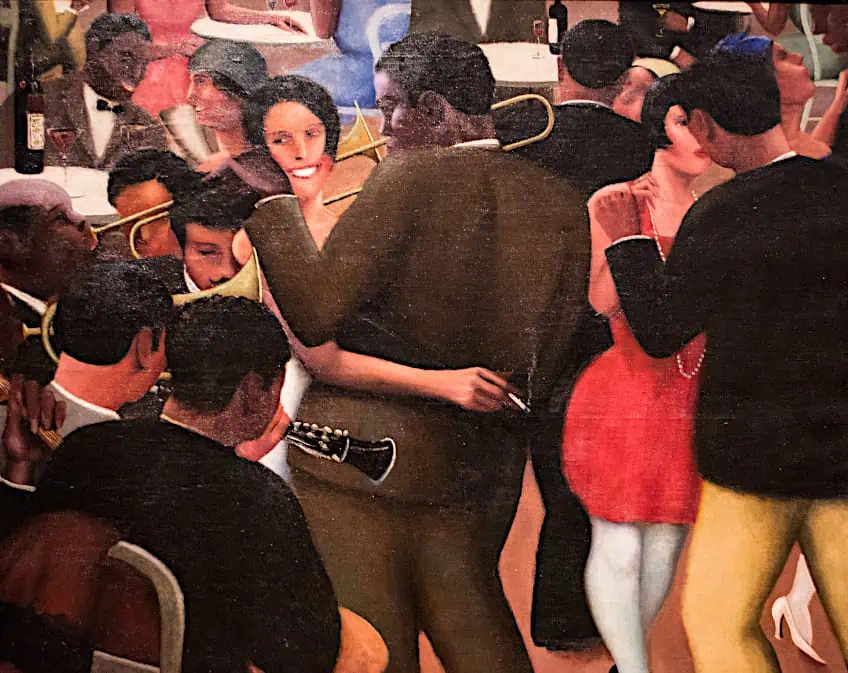
As the movement developed in the 1920s, it spread and attracted the attention of collectors and critics who were interested in the community and its history. With the onset of the Great Depression, the Harlem Renaissance declined and the field of production became more elusive due to the changing socio-political factors that impacted American culture. The significance of the movement cannot be understated since it helped encourage the birth of a new generation of African-American artists who paved the way for greater recognition of issues related to racial stereotypes, discrimination, and Black identity.
Famous 1920s paintings that echo the essence of the Harlem Renaissance include Ethiopia Awakening (1921) by Meta Vaux Warrick Fuller, The Harlem Renaissance (1925) by Archibald Motley, The Banjo Lesson (1926) by Henry Ossawa Tanner, and Singin’ the Blues (1926) by William H. Johnson.
The Nihonga Movement
In Japan, the Nihonga movement was at its peak in the 1920s and was a direct response to influential art styles from the West. The Nihonga movement in the 1920s art scene saw development in the fusion of Japanese painting methods with Modern themes and styles that evokes the essence of Japanese art.
The Nihonga movement originated in the late 19th century due to the changing landscape of the Meiji era and was a method used by Japanese artists to preserve the traditional techniques and legacies of Japanese art.
Materials such as washi paper and mineral pigments were still used in the 1920s to preserve cultural heritage despite the changing landscape as trade opened up. The Nihonga movement was an important art movement in Japan that emphasized the beauty of classical art and themes. A few famous Nihonga artworks from the 1920s include Tabby Cat (1924) by Takeuchi Seihō, Enbu (Dancing in the Flames) (1925) by Gyoshū Hayami, and White Heron (1926) by Shiho Sakakibara.
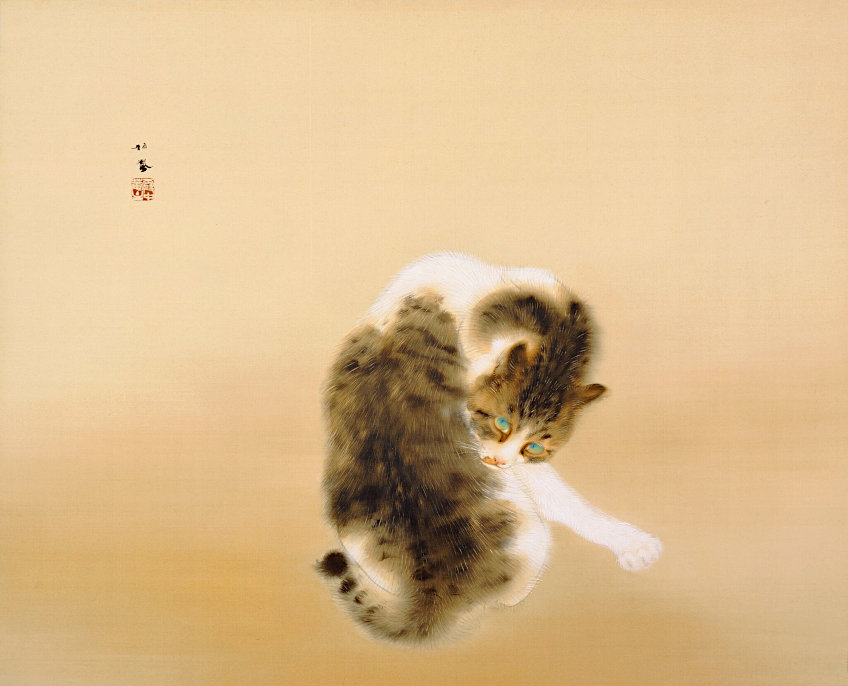
New Culture Movement
The New Culture Movement was considered to be the Chinese Renaissance of the 20th century, which began in 1915 and ended in the mid-1920s. The movement was focused on the modernization of Chinese society through the promotion of scientific ideas and democracy.
The movement had a tremendous influence over literature and the visual arts and encouraged artists to embrace Western conventions and create what was termed “Modern Chinese” art.
This transformative period was shaped by artists such as Guan Zilan, Fu Baoshi, and Qi Baishi. The movement dissipated almost entirely in the 1940s under the new Communist Party.

Dadaism
The famous Avant-Garde movement known as Dadaism emerged in the 1920s that confronted the norms of social and artistic conventions following World War I. The movement originated in Zurich and spread across Europe and the rest of the world among a diverse group of writers, artists, and intellectuals who embraced notions of anti-art, absurdity, and art that defied logic.

Dadaists looked toward performance art and poetry as popular forms of expression that went hand in hand with movements like Surrealism, which shared similar preferences for the unconventional. Dadaist art consisted of photomontage, collage, and found object art, which was playful and greatly influenced the development of movements like Pop art and Conceptual art.
An Overview of 1920s Photography Styles
The 20th century was also a significant period in the development of Modern technologies, including the camera, which resulted in the development of new photography styles throughout the 1920s. Below, we will examine the dominant photography styles of the 1920s that will give you a full picture of the visual landscape of the Roaring Twenties.
Modernist Photography
1920s art was largely informed by the visual narratives produced by modernist photography, which originated as a radical style that rejected traditional pictorialism.
Modernist photographers used the mechanical nature of the camera to produce decade-defining images of modernity and the machine age that resulted in innovative uses of light and shadow, sharp images, and geometric compositions.
Famous Modernist photographers such as Laszlo Moholy-Nagy, Dora Maar, and Man Ray paved the path forward for abstraction in Modernist photography, which was led by self-expression and dynamic visual languages that helped photography as a genre become accepted as fine art.
Photojournalism
While photojournalism existed before the 1920s, photojournalistic photographers increased in the decade due to technological advancements in photography that enabled artists to capture candid moments with faster shutter speeds and increased portability. The 1920s art scene was loaded with photojournalists such as Margaret Bourke-White and Lewis Hine who used photography to advocate for humanitarian issues. With the increased ease of functionality and portability of cameras, artists were able to improve their storytelling and capture reality as they saw it.
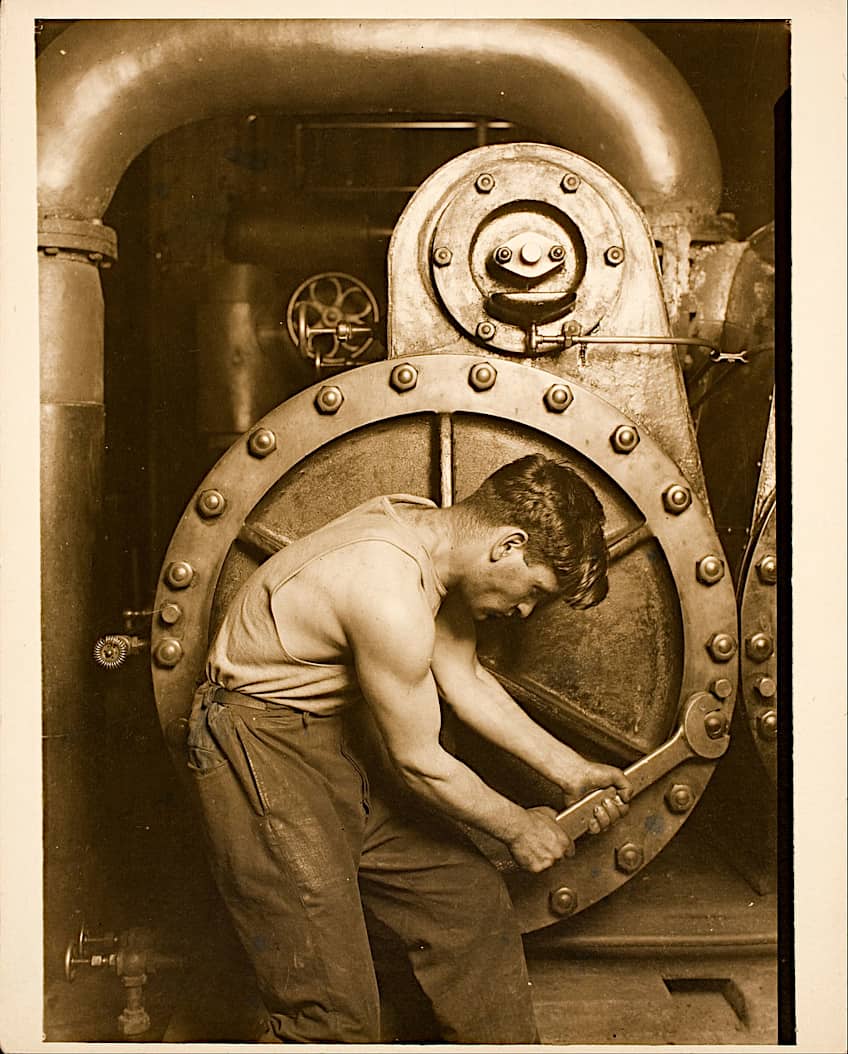
New Objectivity
The New Objectivity movement was also recognized as the Neue Sachlichkeit movement and emerged in Germany in the 1920s as a response to World War I and its impact.
Photographers who emerged from the New Objectivity movement sought to present images that reflected the detached views of life around them and included documentation of social issues.
New Objectivity rejected Romanticism and embraced social engagement and Realism. Famous photographers under the movement included Albert Renger-Patzsch and August Sander who pioneered a matter-of-fact approach of the interwar period.
Straight Photography
Many have not heard of the style known as straight photography, which was a product of the 1920s that was similar to the Neue Sachlichkeit movement. Straight photography aimed to capture images in an unaltered manner with as much clarity and sharpness as possible. Photographers such as Paul Strand and Edward Weston were at the forefront of straight photography and rejected soft focus and celebrated the aesthetics produced by photography as a medium.

Art in the 1920s reflected the changes in the world in the aftermath of the First World War and the influence of a culture that reflected both the need to preserve and break free from traditions in art. We hope that you have enjoyed this in-depth review of art from the 1920s and the many influential art movements that emerged from the decade!
Take a look at our 20s art webstory here!
Frequently Asked Questions
Which Art Movements Emerged in the 1920s?
Many art movements emerged and evolved in the 1920s, including Surrealism, Cubism, American Modernism, Precisionism, Dadaism, Art Deco, the Nihonga movement, the Harlem Renaissance, and the New Culture Movement.
What Type of Art Was Popular in the 1920s?
The most famous type of art in the 1920s was considered to be the Art Deco style, which influenced the fields of visual art, architecture, and interior design. The style was defined by geometric shapes, bold lines, and stylized imagery, which appealed to many across America and Europe.
What Were the Dominant Themes in 1920s Art?
The main themes discussed in art made in the 1920s included themes of societal progress, modernity, technology, sexuality, war, materialism, rebellion, avant-garde, and horror.
Who Were the Most Famous 1920s Painters?
Among the most famous painters from the 1920s include artists such as Franz Marc, Salvador Dalí, Wassily Kandinsky, Erich Heckel, Edvard Munch, Edward Hopper, and Diego Rivera.
Jordan Anthony is a Cape Town-based film photographer, curator, and arts writer. She holds a Bachelor of Art in Fine Arts from the University of the Witwatersrand, Johannesburg, where she explored themes like healing, identity, dreams, and intuitive creation in her Contemporary art practice. Jordan has collaborated with various local art institutions, including the KZNSA Gallery in Durban, the Turbine Art Fair, and the Wits Art Museum. Her photography focuses on abstract color manipulations, portraiture, candid shots, and urban landscapes. She’s intrigued by philosophy, memory, and esotericism, drawing inspiration from Surrealism, Fluxus, and ancient civilizations, as well as childhood influences and found objects. Jordan is working for artfilemagazine since 2022 and writes blog posts about art history and photography.
Learn more about Jordan Anthony and about us.
Cite this Article
Jordan, Anthony, “1920s Art – A Decade of Major Developments in Early Modernism.” artfilemagazine – Your Online Art Source. November 16, 2023. URL: https://artfilemagazine.com/1920s-art/
Anthony, J. (2023, 16 November). 1920s Art – A Decade of Major Developments in Early Modernism. artfilemagazine – Your Online Art Source. https://artfilemagazine.com/1920s-art/
Anthony, Jordan. “1920s Art – A Decade of Major Developments in Early Modernism.” artfilemagazine – Your Online Art Source, November 16, 2023. https://artfilemagazine.com/1920s-art/.


